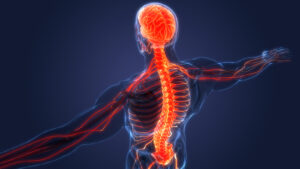 Do you ever experience muscle spasms? If so, you’re not alone. Muscle spasms are a common problem that can be both painful and frustrating. But new research suggests that there may be a simple way to help relieve them: calming the spinal cord.
Do you ever experience muscle spasms? If so, you’re not alone. Muscle spasms are a common problem that can be both painful and frustrating. But new research suggests that there may be a simple way to help relieve them: calming the spinal cord.
Those who experience muscle spasms may suffer from difficulty moving, disrupted sleep, or may have injuries from hitting something accidentally. But a new study from Edith Cowan University has revealed two methods that can make the spinal cord less excitable, which could be used to treat muscle spasms.
Advertisement
For the study, researchers looked at the way the body moves. The brain sends messages to the muscles through motoneurons in the spine, amplifying neural signals from persistent inward currents. This means the brain doesn’t have to work as hard to contract the muscles.
Lead researcher Ricardo Mesquita said, “These amplification powers are great, but sometimes they can be too much of a good thing.”
Some clinical conditions that are characterized by hyperexcitable spinal motoneurons have amplified neural signals but no inhibition to stop it. This can lead to involuntary muscle spasms that can be painful and cause injuries.
Researchers took this information and found that there may be two ways to help with amplification. The first involves electrical stimulation on specific nerves, which can help reduce the spinal cord’s amplification.
The other method includes relaxation. The amplification is enhanced by chemicals such as serotonin and noradrenaline that are released when we move. So, in some conditions such as multiple sclerosis or brain injury, relaxation therapies may have the potential to decrease the amplification and the severity of the spasm.
Researchers believe these electrical stimulations and relaxation techniques could be non-pharmacological alternatives or used in combination with other therapies.
“Now that we have shown how we can reduce this neural amplification in people without neurological disorders, the next step would be to develop therapeutic protocols to see if they’re effective in people who suffer from these symptoms,” concluded Mesquita.
Muscle Support
Regular exercise is essential for maintaining muscle strength. However, as we age, our muscles begin to deteriorate, and we can lose up to 30% of our muscle mass by the time we reach the age of 70.
Advertisement
This loss of muscle mass can decrease strength, flexibility, and balance, which can make everyday activities more difficult. In addition, muscle loss can also contribute to a sedentary lifestyle, as it becomes more challenging to stay active when we don’t have the muscle support that we once did.
This is why it’s essential to maintain muscle strength through regular exercise and additional support. While daily exercise is key, additional support can be extremely helpful in preserving muscle mass and preventing age-related muscle loss.
That is where Clinical Strength Muscle Support comes in. Designed to help support aging muscles, this unique formula uses the powerful Tongkat ali extract LJ100®, which helps enhance physical performance, muscle strength, and energy. It also includes five compounds (carnitine, vitamin D, vitamin E, leucine, and magnesium) that boost muscle strength and performance, which also go a long way to helping improve general health.
